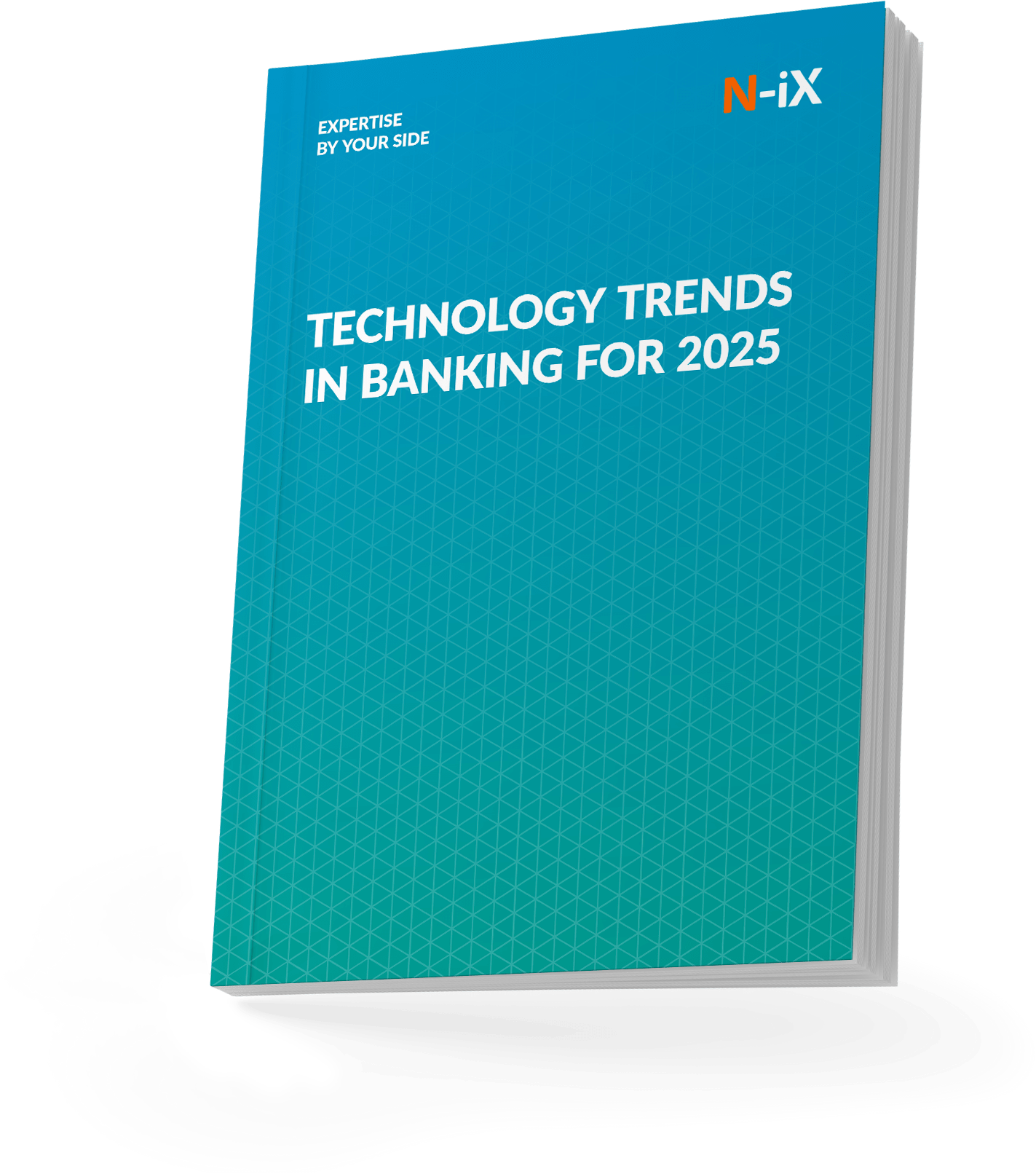Payment apps have seen extensive growth, and peer-to-peer (P2P) technology does not surprise anyone now. But that doesn't mean innovation has plateaued. In fact, the evolving landscape of financial software development offers countless ways to differentiate products in the market. Users are always on the lookout for convenience and better functionality. Precedence Research projects that the total value of digital payment transactions will surpass $14T by 2029, with the market value doubling over the next five years. Let's explore how technology can be used for payment app development that can capture market share today.

Support of more payment types
There are four main types of mobile payment app development; they are distinguished by who offers the app and how the app is used:
- P2P payment apps: This category of payment apps is used predominantly to transfer money directly to one another, typically through mobile devices, using a connected bank account or credit card. PayPal is the most widely known example of this type.
- Mobile wallets: It's important to distinguish between digital wallets and mobile wallets. Digital wallets are a part of most payment apps and refer to the capacity to link debit and credit cards to use online, while mobile wallets are apps that facilitate payments via the NFC chip of a smartphone (Apple Pay, Google Pay, and Samsung Pay). This type of payment app is connected to the OS of the mobile device and cannot be developed independently by a third party.
- Payment gateways: These apps allow businesses to accept payments from customers. They facilitate secure transactions by acting as intermediaries between the customer and the merchant's bank.
- Banking apps: Many banks engage with finance software development and offer their own mobile apps, which include payment functionalities and access to other bank's services.
Regardless of the type, all payment apps can benefit from improving the user experience, expanding functionality, and improving efficiency.

Cross-currency payments
Payments that require currency conversion are still complex and may require several days to process, but payment app development has the potential to leave that to history. Forex trading platforms and currency exchange service providers offer APIs that allow a payment app to connect to the currency exchange market and carry out cross-currency transactions without delay. When a user initiates a payment in a foreign currency, the app calls the API to retrieve the current exchange rate. The app then automatically converts the amount the user is sending into the recipient's currency using this real-time rate.
In some cases, payment apps might use dynamic pricing, where they automatically apply the best available exchange rate at the time of a transaction to offer users the most favorable rates. AI hedging strategies can allow the app to lock in exchange rates for the user's transaction for a short period. This ensures that users can benefit from the current rate even if it fluctuates later. Users can benefit from an integrated exchange rate prediction algorithm that can help them maximize their benefit from the translation.
Buy-Now-Pay-Later (BNPL)
Short-term consumer loans are becoming increasingly popular, and the number of BNPL transactions has increased by 14% from 2023 to 2024, according to Pymnts. BNPL offers consumers the ability to purchase goods or services and pay for them over time, often without interest for a set period. BNPL provides flexibility to consumers while helping merchants increase sales, as customers are more likely to complete purchases when they don't have to pay the full amount upfront.
When buying a product on a merchant's website, the user can choose to split the payment into installments rather than paying the full amount upfront. The app runs a credit check or pre-approval process to determine the user's eligibility for the BNPL option. The remaining payments are automatically debited from the customer's account on the scheduled dates until the full amount is paid off. Approval typically happens within seconds, using the user's past financial data and behavior. Despite the customer paying in installments, the merchant immediately receives the full payment.
Implementing BNLP in payment app development thus requires integration with an automatic credit scoring and risk assessment system. This can be done via credit reporting agencies or an internal AI-powered algorithm. It also requires integrating a payment gateway and an automatic billing system to process recurring payments. Payment details must be stored securely using tokenization, replacing sensitive payment information (like credit card numbers) with a secure token to protect against data breaches and fraud. Integrating customer service chatbots or AI-driven support systems in p2p payment app development helps users manage their BNPL payments, adjust due dates, or seek help in the event of financial difficulties.
Internet of Things
Smart devices (such as watches, cars, or fridges) are embedded with sensors, communication protocols, and payment processing capabilities. These devices can automatically authorize transactions or prompt users for minimal input, allowing them to make payments in the background, often without needing the user to even interact with their phone or a payment terminal. For example, a smart refrigerator can detect when certain groceries are running low and automatically reorder them from a partnered store, charging the payment method linked to the user's account.
Once the device initiates the payment, the user's stored payment credentials (credit card, mobile wallet, etc.) are securely transmitted to the payment processor. IoT payment systems must ensure encrypted communication between the device and payment processor and use advanced authentication methods such as biometrics, tokenization, and cryptographic protocols to prevent fraud. However, many IoT payments are designed to be completely frictionless.
Invisible payments
Some transactions are cumbersome to repeatedly make manually. Subscription services with fluctuating rates, car parking, and ridesharing are examples of payments that can easily slip one's mind, resulting in unpleasant consequences. Invisible payments offer a solution that typically involves pre-authorized transactions. In this system, a payment method is linked to a user's account and can be charged automatically when a service is used. These systems can have a set of triggers, for example, a user entering or exiting a specific area. Parking apps might automatically charge for the duration of a stay, triggered by a car's entry into or exit from a parking lot.
Features creating value and enhancing the user experience
Payment apps can differentiate themselves and deliver added value to users by integrating features that go beyond basic money transfers. Features like spending analytics, budgeting tools, personalized insights, and automatic saving recommendations enhance the user experience and empower users to manage their finances better.
Spending analytics
Data analytics features allow users to manage their finances more effectively, offering them a clear view of their spending habits, helping with budgeting, and enabling more informed financial decisions. 65% of Gen Z and 61% of Millennials say that help in improving their financial health is the number one factor they consider when choosing a bank.

Spending analytics pulls customer transaction data and presents it in an easy-to-understand format, typically as charts, graphs, or summaries. This visualization enables users to observe their spending trends over time and identify patterns, streamlining the expense tracking process. Additionally, this feature helps users organize their financial data for tax purposes, simplifying the tracking of deductible expenses and the preparation of tax documents.
AI financial advice
AI-powered budgeting advice surpasses traditional spending analytics. Unlike conventional budgeting tools that require manual input, AI-driven tools continuously learn from user behavior. These AI-generated budgets are dynamic and adaptive, adjusting to changes in income, spending patterns, or new financial goals set by the user. While general financial advice can be challenging to apply to one's unique situation, AI excels at creating personalized, actionable recommendations for saving money. By scrutinizing spending habits, AI can pinpoint areas where users can reduce expenses, opt for more affordable alternatives, or capitalize on discounts and offers.
Streamlined and enhanced security
Security is critical in payment apps; enhancing it with user-friendly features can significantly improve the app's overall convenience. Biometric security, such as fingerprint scans or facial recognition, not only streamlines the authentication process but also adds an extra layer of protection. Shortening the authentication process to as little as one second reduces user friction while lowering the risk of data breaches, as biometric data is more difficult to compromise than traditional passwords.
Stay ahead in banking—explore 6 tech trends shaping the industry in 2025!


Success!

Choosing the outsourcing partner for payment app development
Choosing the right outsourcing partner for payment app development is crucial, as it directly impacts the final product's security, functionality, and user experience. A payment app requires a partner with expertise in fintech, regulatory compliance, cutting-edge technologies, and the ability to scale, innovate, and provide long-term support.
N-iX has successfully delivered numerous projects, including mobile app development in the fintech domain. Our team is comprised of over 200 data experts, each with hands-on experience in critical technologies like data, AI, and ML.
Creating financial software requires a deep understanding of the finance industry, including regulatory compliance, precise data handling, and addressing unique business challenges. With a team of over 300 finance domain specialists and a portfolio of over 250 successful projects, we are equipped to deliver tailored solutions that meet industry-specific requirements.
We follow strict international standards and regulations, including ISO 27001:2013, PCI DSS, ISO 9001:2015, and GDPR. This commitment to compliance ensures that our engineering and delivery services maintain the highest levels of quality and security for your payment app.
Read more: Facilitating secure neobank transformation
Have a question?
Speak to an expert




